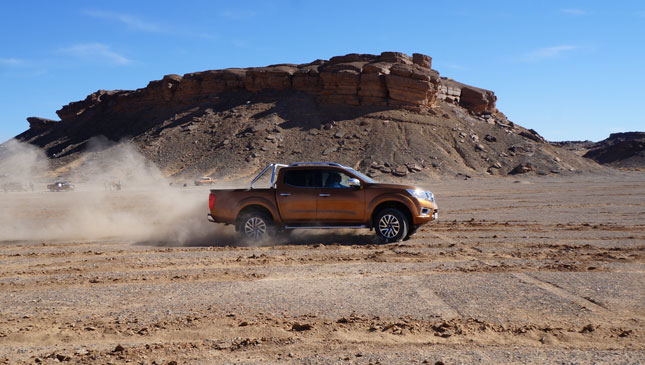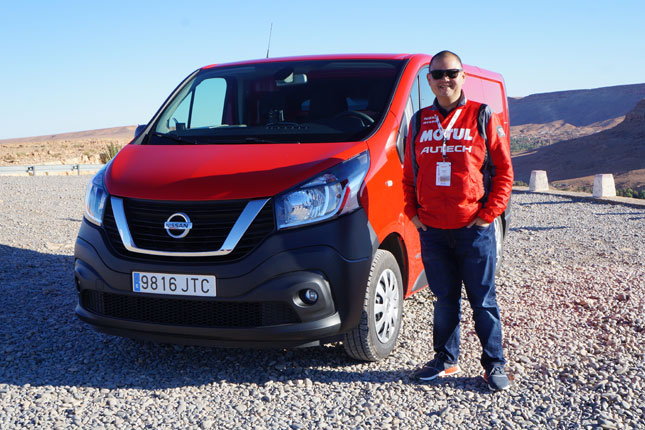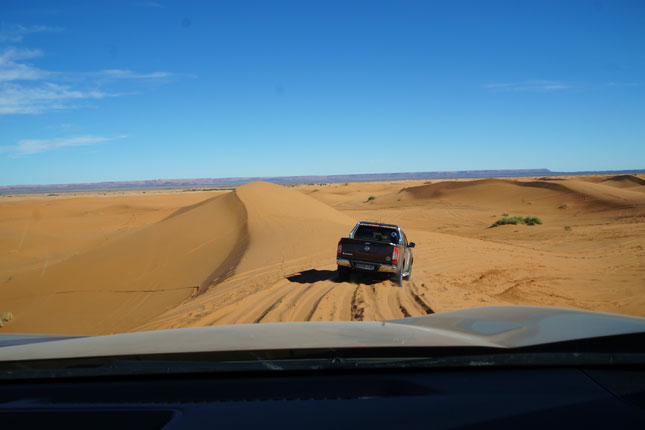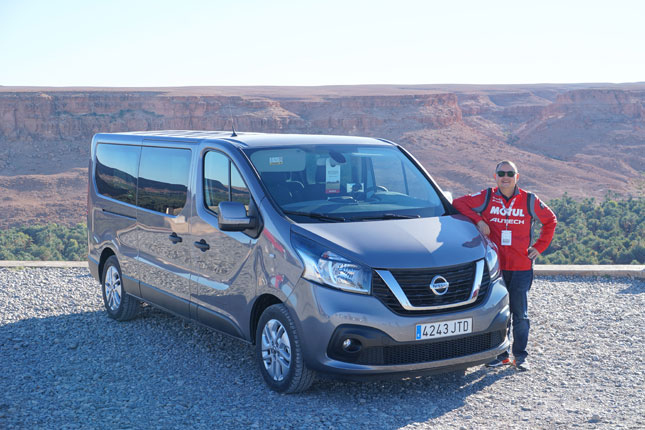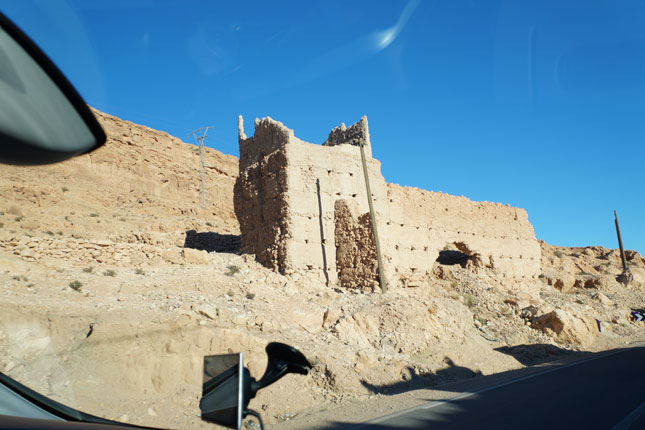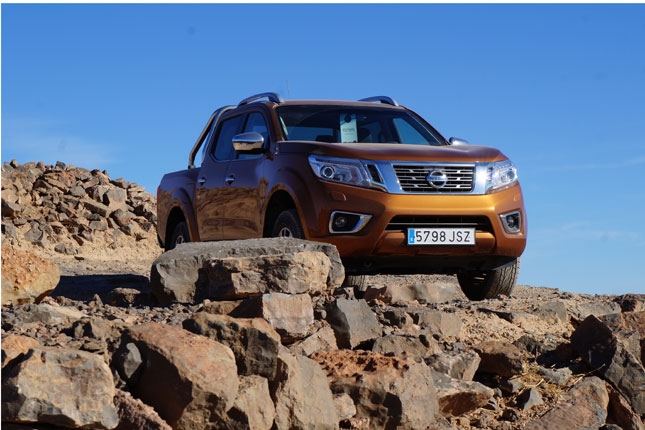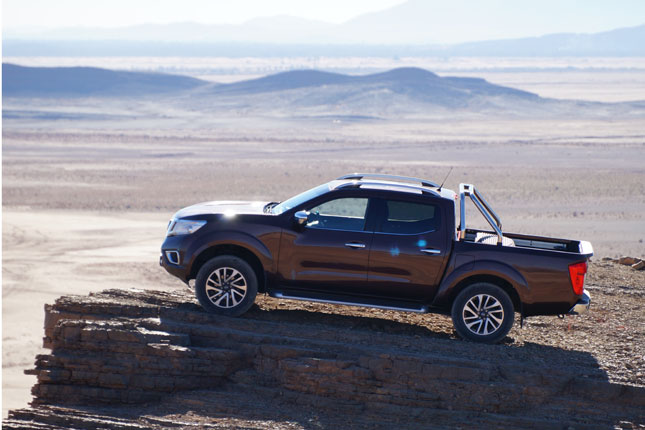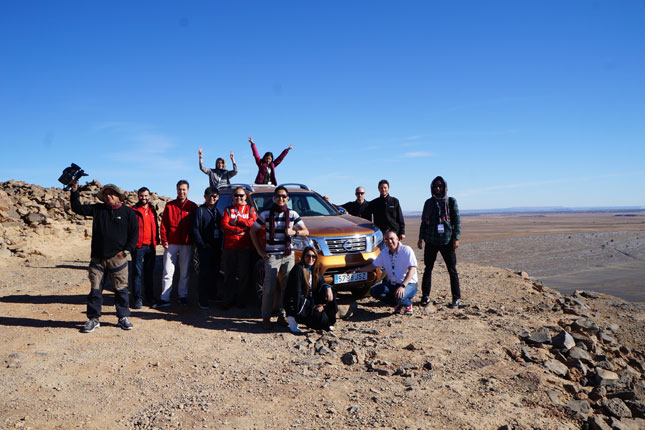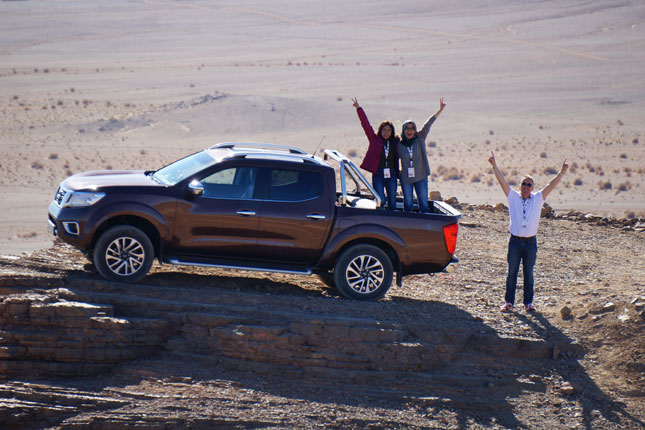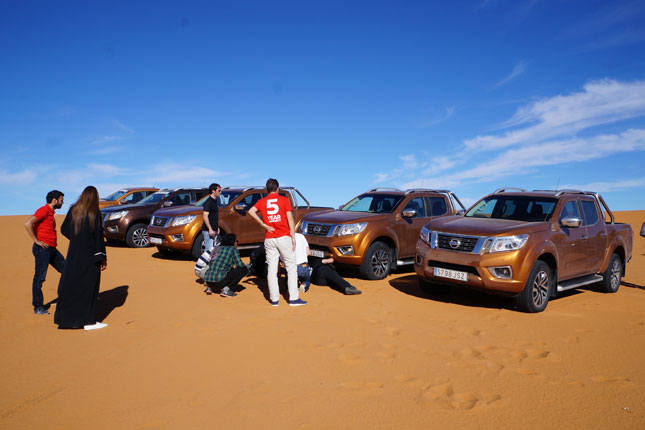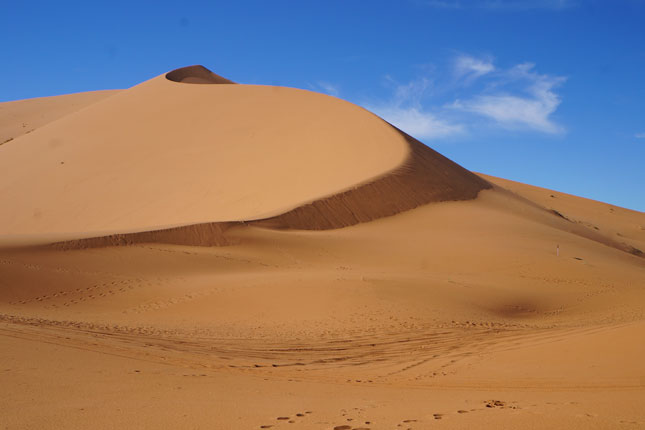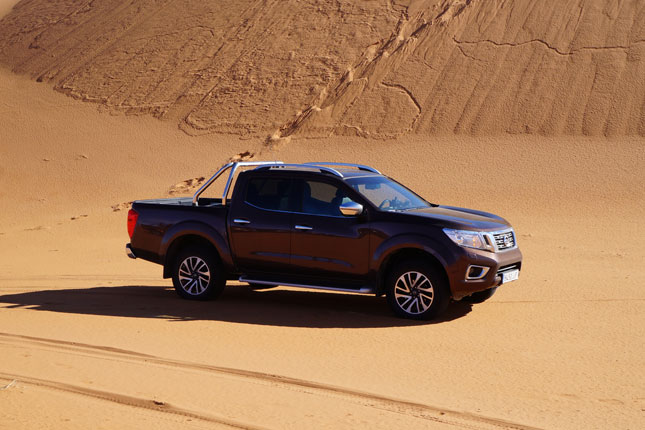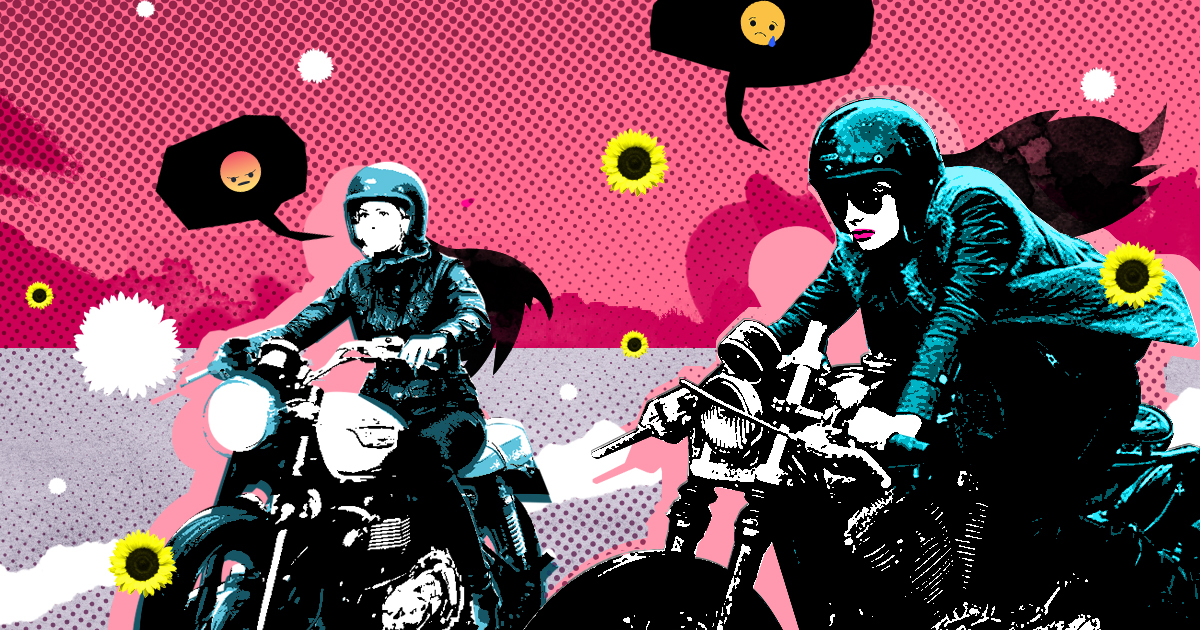Nissan is a brand on the rise worldwide, with sales of its light commercial vehicles (LCVs) doing very well across all markets. Currently, 20% of all Nissan vehicles sold worldwide are LCVs. To celebrate, Nissan Global invited motoring journalists from across the globe to sample the latest Nissan NV300 van and Navara NP300 in perhaps one of the harshest terrains in the world: the Sahara desert.
Our group converged in Barcelona, Spain, where the European-spec Nissan Navara NP300 is made. The Euro-spec Navara is very similar to ours: It boasts a comfort-leading rear suspension thanks to the independent multi-link set-up, a 1-ton payload capacity and towing capacity, a seven-speed transmission, and of course the roomy interior matched with excellent driving dynamics on- and off-road. Small differences include a sliding and tilting glass sunroof, full leather interior, and satnav for the Euro spec.
The biggest difference, however, is the engine. The YD25DDTi 2.5 liter CRDi turbocharged and intercooled diesel engine found on our ASEAN-spec Navara is replaced with a smaller but more technologically-advanced 2.3 liter CRDi diesel that comes with a twin-sequential turbocharged diesel engine. While figures remain the same at 187hp and 450Nm, the difference is that the YS23DDTT delivers far better low-end power and grunt, plus a wider and more responsive powerband. After sampling this engine, I have to say that the Europeans got the better end of the deal.
From Barcelona, we took a special chartered flight to Errachidia in Morocco, on the Eastern section of the Sahara Desert. Upon landing, the scene was very romantic and picturesque. Luckily, we got to driving on the terrain right away.
A Nissan NV300 passenger van was our first ride. It’s a huge van based on the Renault Passport platform. Power comes from a 1.6-liter CRDi diesel engine in 95hp and 147Nm guise. We drove the higher-powered variant, which has a twin-sequential turbo diesel powertrain mated to a six-speed manual transmission. Rowing through the gears was slick, and despite sticking to the speed limit, we covered a whole lot of ground in under three hours. The trip included a scenic drive through the mountain ranges bordering the Sahara and a crawl through a garden oasis of palm trees enveloping a small village.
The NV300 is a great van, and perfectly demonstrates how you can achieve power and efficiency from a small-displacement engine with the right tech. Shame that we won’t be getting this van anytime soon as it’s currently only a Euro-market model.
For day two, we drove the Navara NP300. We would cover roughly 200km, across all types of terrain that the Sahara could throw at us. We started out on smooth pavement, followed by some older broken tarmac through historic towns that seem stuck in the middle ages, followed by some mild hard-clay dirt trails. Then from compacted clay with fine sand on the surface, the terrain got firmer, and rockier. As we approached the first stop, we had to navigate through a tight, narrow rocky trail with a surface that resembled steps, getting steeper as we got higher.
At the summit, a few hundred feet above sea level, we saw the vast expanse of the Moroccan side of the Sahara. The Navara’s hill descent control proved useful keeping us on the straight and narrow path on the way down. One wrong move meant a shortcut straight down to a dusty demise.
Safely back on terra firma, our group proceeded to our lunch destination, which was 50km away. From rocky surfaces, the trail through the desert become milder again, with more firm clay and sand. At one point, we reached a surface that was very firm, allowing us to really open up the Navara. We reached speeds of up to 150kph and the sensation was amazing. The pickup was wagging its tail a bit whenever we’d hit slippery sand atop the firm clay, and the dust storm we were kicking up was breathtaking. But equally strong crosswinds meant visibility would get close to zero at times, necessitating us to back off lest we hit the car in front of us.
After lunch, we reached the final challenge: the really soft and slippery sand dunes. Prior to letting it rip, we received a special briefing from Javier Herrador, a multiple Paris-Dakar veteran on both two and four wheels. We were told to always remain in constant motion because stopping meant getting stuck. We were told to be smooth but positive in our acceleration and braking, and to maintain a safe distance behind the car ahead. With those words, we were let loose!
The first trail was a short 3km trail, which we covered twice. The lead car expertly guided our convoy through the sand dunes. It was easy to get lost because everything literally looks the same. Were it not for the poles marking the track, things could have gotten ugly indeed.
The second trail was a longer 23km route, which would be a test of skill, patience, and the Navara’s capabilities. The surface was softer, and despite airing down the tires to a low 20psi, engaging in four-low, and a variety of electronic driving aids to help us out, everyone got stuck. This was the longest 23km of my life, which required almost three hours to complete. I got stuck once at the last crest before the finish line. Luckily, I escaped getting stuck two other times thanks to some techniques handed to me by local off-road gurus, the Navara’s performance, and a bit of luck. I could barely eat the traditional Moroccan dinner later that day as I was dead tired, the adrenaline from the drive having drained me completely.
Day three saw us take another short drive in the NV300 back to the airport. Later as our chartered flight departed the African continent from Morocco, I gazed at the endless expanse of red orange sand and wondered if I will ever visit this beautiful place again. Someday.

